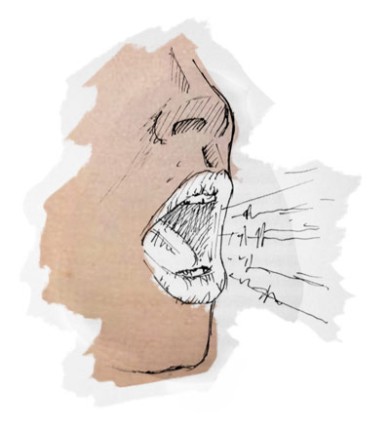Recent Question from ‘Kate’:
I am due to go into the recording studio to record my next album. I am expected to be vocally on top form and ready to sing for 8-12 hours a day. I know from past albums that my voice will get really tired. Last time I suffered from hoarseness, dry throat and pain down the right side of my neck after about 3 days of recording but I had to carry on. My vocal coach has said I need to build up my stamina by singing for longer periods gradually over time as this will help to build up stamina in the muscles used for singing.
Is this right? Can I I build my vocal stamina just with doing more singing? Will this help me to develop my voice so that I can sing 8 hours a day without any vocal fatigue or strain?
Short answer: No!
Long answer: Read on to find out more about ‘vocal stamina’ and how to actually develop your ability to sing for longer without strain and vocal fatigue.
What is Vocal Stamina?
Having good ‘vocal stamina’ is having the ability to sing for long periods of time, ideally without consequences of voice strain or hoarseness. Having good ‘vocal stamina’ is a highly sought after skill amongst singers, especially with ever increasing repertoire demands put upon our artists, music teachers, choir leaders and performers. As you can see from Kate’s question – in some cases, singers are asked to sing for over eight hours a day, many days in a row!
Building Vocal Stamina purely through increasing the amount  you sing is dangerous
you sing is dangerous
You can see where Kate’s vocal coach’s logic comes from. In the world of Athletics, building stamina involves endurance training. Endurance training focuses on increasing the body’s ability to withstand fatigue and stress, raising an athlete’s threshold to fatigue. If they manage to push through that physical fatigue, the athlete will by definition have developed their endurance ability, therefore it is said their stamina has improved. The idea of a singer building up vocal stamina in this way can be quite dangerous and lead to incurable vocal fold damage.
Why?
The difference is to do with anatomy of the musculature involved for a singer. Let’s take an example: A body builder who wishes to build muscle will do so by aiming for their muscles to hypertrophy (increase in size) through lifting weights. Growth of the muscle is thought to happen as muscles fibers repair from damage due to overuse. Put simply, overusing particular muscles causes body builder’s muscles to become stronger. Skeletal muscle tissue is the most adaptive tissue in the body, and can therefore be overused time and again with little to no damage. As any body builder would agree – it’s actually very hard to grow muscles and takes a great deal of persistence and dedication to do so!
Unfortunately for singers our laryngeal muscle physiology is not the same as trunk muscle physiology. Research into laryngeal muscle fibers is patchy, but what research does show confirms we cannot grow strength in our laryngeal muscles as the muscle fibers are built for short spurts of high speed and power, fatiguing more rapidly than the slow twitch muscles in our body, such as those used for postural maintenance. I am not a muscle expert, so read the research here if you would like more information concerning muscles.
See here for more details about muscle fiber types.
What about the vocal folds?

The vocal fold anatomy is more complex. The vocal folds can be thought of as two parts: the body and the cover. The body is responsible for providing tension and establishing vocal pitch. The cover of the vocal folds have many layers (made up of the epithelium and lamina propria) which, when combined, form the vibrating section of the vocal folds. ‘Jelly-like and slippery’, as I explain it to singers who come into voice clinic, so they can slip over each other quickly and effectively when a wave is passing through them.

The hoarseness and vocal fatigue you might be familiar with is a common indicator that the voice has been overused. This happens because the cover section has swollen. The best way to reduce inflammation in this layer of the vocal folds is to rest. Once swelling occurs in the vocal fold cover layers, pushing your voice by continuing to sing and speak will not build stamina – it will not enable you to sing longer next time. ‘Singing through it’ using swollen vocal folds puts you at risk of further damage to your vocal folds. Potentially you are putting yourself at risk of developing more serious conditions, such as: vocal fold nodules, polyps, haemorrhages, and other pathologies.
As I said before…laryngeal muscles do not hypertrophy (grow in strength) with continued use, so you’re not ‘building stamina’ by overusing these muscles.
Ok, so how CAN I get better at singing for longer without discomfort or hoarseness?

Modern singers are often referred to as ‘vocal athletes’. This should not be in reference to their ability to push through physical challenges, as some sports athletes do! In clinic, when I refer to singers being ‘athletes’ it is with regard to how you use your voices more dynamically than your average Joe Bloggs, therefore you have a responsibility to yourself to maintain a healthy lifestyle and undertake regular vocal exercise that establishes and maintains good vocal technique if you want to continue to have such a dynamic vocal instrument. Just as good athletes do.
Why is vocal training so important?
You might be blessed with great vocal technique anyway, and so not be aware of the trouble and strife of vocal strain, however, for the rest of us mere mortals…establishing good vocal technique through adequate vocal training will help to improve efficiency and conditioning of your muscles, prolonging the period of time until your cover layers swell by ensuring you are not putting undue stress on them. This IS improving your vocal stamina (endurance). This is how you do it… improve your technique.
Monitor yourself for signs of fatigue
Voice strain and vocal fatigue is the body’s way of telling you your instrument is overworked! Continuing to sing at this point will simply increase the swelling of the cover layer of your vocal folds, prolonging recovery from a hoarse to normal voice.
Please note: other factors may have a role in vocal fatigue and strain, so always go and see your GP and get a referral to an ENT doctor so they can have a look at your vocal folds. Never just presume your problems are solely due to poor technique. If you’ve been having problems – Voice clinics exist for people like you!!
I work as a Singing Voice Specialist Speech and Language Therapist both privately (www.carriegarrettvocals.com) and for the NHS at the University Hospital South Manchester department of Speech, Voice and Swallowing. Referrals to our Singer’s Clinic are accepted with GP referral, post-ENT.
To see me privately, message me via my website. Skype sessions available!
Rest up all you singers out there!! Short term annoyance (resting) for longer term gain (healthy voice)…. And get some technique lessons!!
Smile 🙂
Carrie x





